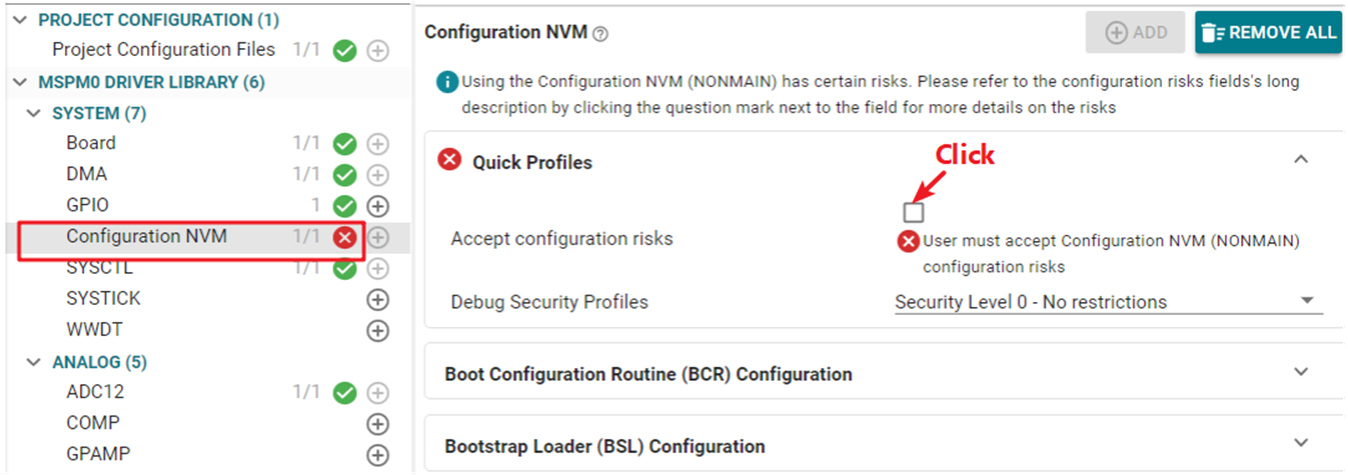SLAAED1D June 2023 – October 2024 MSPM0C1103 , MSPM0C1103-Q1 , MSPM0C1104 , MSPM0C1104-Q1 , MSPM0G1107 , MSPM0G1505 , MSPM0G1506 , MSPM0G1507 , MSPM0G1519 , MSPM0G3105 , MSPM0G3105-Q1 , MSPM0G3106 , MSPM0G3106-Q1 , MSPM0G3107 , MSPM0G3107-Q1 , MSPM0G3505 , MSPM0G3505-Q1 , MSPM0G3506 , MSPM0G3506-Q1 , MSPM0G3507 , MSPM0G3507-Q1 , MSPM0G3519 , MSPM0L1105 , MSPM0L1106 , MSPM0L1117 , MSPM0L1227 , MSPM0L1228 , MSPM0L1228-Q1 , MSPM0L1303 , MSPM0L1304 , MSPM0L1304-Q1 , MSPM0L1305 , MSPM0L1305-Q1 , MSPM0L1306 , MSPM0L1306-Q1 , MSPM0L1343 , MSPM0L1344 , MSPM0L1345 , MSPM0L1346 , MSPM0L2227 , MSPM0L2228 , MSPM0L2228-Q1
- 1
- Abstract
- Trademarks
- 1Overview
- 2Step 1: MSPM0 Selection
- 3Step 2: MSPM0 Evaluation
- 4Step 3: Hardware Design
- 5Step 4: Mass Production
- 6Step 5: Quality and Reliability Instructions
- 7Common Questions
- 8Additional Information
- 9Summary
- Revision History
3.3.2.4 NONMAIN View
The NVM (NONMAIN) is used to configure the MSPM0 protected area related to boot configuration, security, and bootloader. With the incorrect program in NONMAIN, MSPM0 breaks. That is why the configuration risks must be accepted before performing configurations. As this function is for high level users, for details, please refer to MSPM0 NONMAIN FLASH Operation Guide.
 Figure 3-13 NONMAIN View
Figure 3-13 NONMAIN View